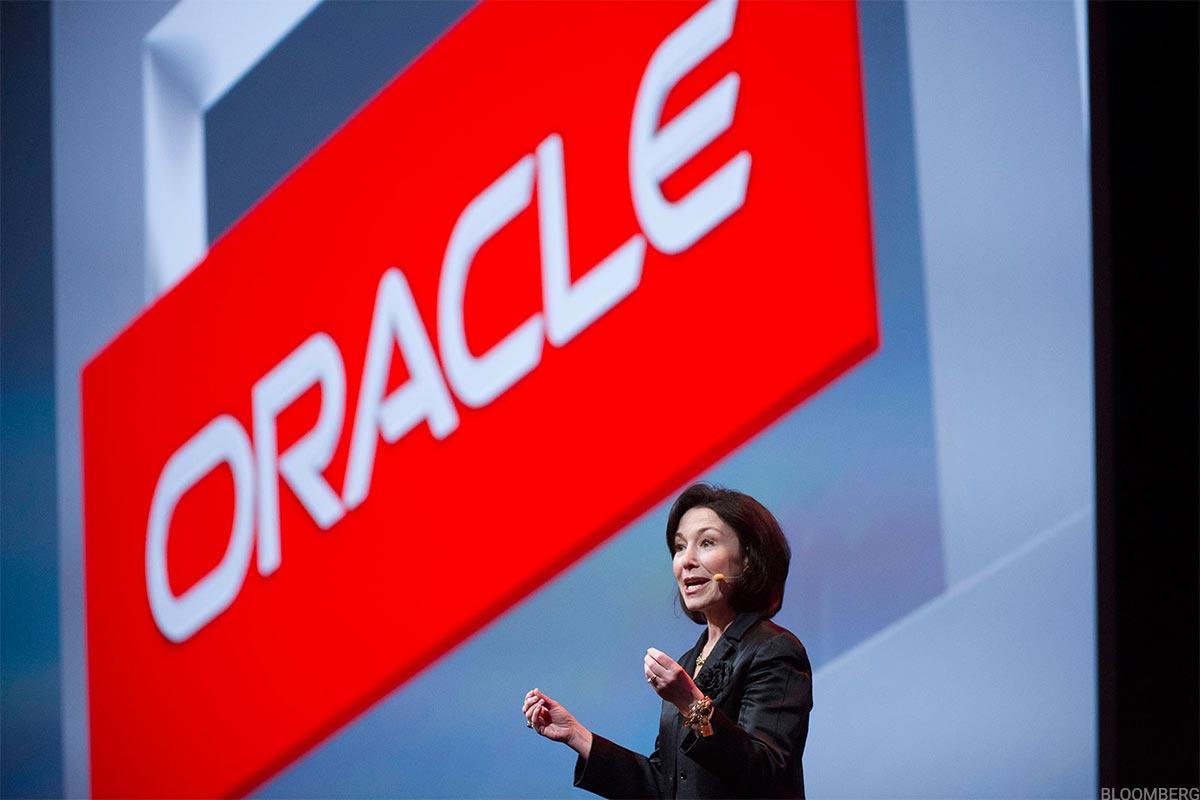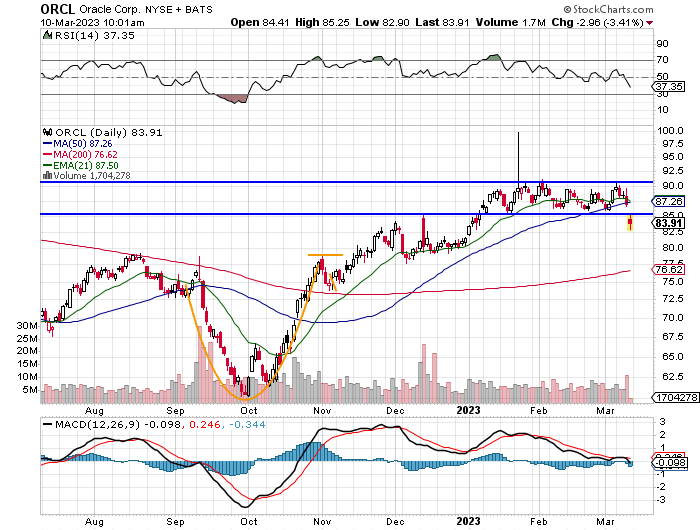I Used to Really Like Oracle, Here’s Why I Don’t Now

On Thursday evening, Oracle (ORCL) released the firm’s fiscal third quarter financial results. For the three month period ended February 28th, Oracle posted an adjusted EPS of $1.22 (GAAP EPS: $0.68) on revenue of $12.398B. The revenue print fell short of Wall Street’s expectations, but was still good enough for year over year growth of 18% or 21% in constant currency.
Operating expenses across the firm increased 37% or 39% in constant currency to $9.138B. At a GAAP operating margin of 26%, the left the firm with operating income of $3.26B (-15%, -11% in cc) and net income of $1.896B (-18%, -13% in cc). On an adjusted basis, operating margin for the quarter came to 42%. Sizable adjustments were made for both stock based compensation expense ($924M) and the amortization of intangible assets ($886M).
Segment Performance
– Cloud Services and License Support generated revenue of $8.923B (+17%, +20% in cc). Out of this came operating expenses of $1.98B (+52%, +54% in cc).
– Cloud License and On-Premise License generated revenue of $1.288B (+0%, +4% in cc). Operating expenses directly tied to this unit were not specifically broken out in the press release.
– Services generated revenue of $1.398B (+74%, +80% in cc). Out of this came operating expenses of $1.215B (+81%, +87% in cc).
– Hardware generated revenue of $811M (+2%, +4% in cc). Out of this came operating expenses of $244M (+0%, +2% in cc).
Fundamentals
For the nine months ending February 28th, Oracle drove operating cash flow of $11.518B, more than doubling what the firm generated for this category for the first nine months of the year ago fiscal year. The firm spent $6.782B on capital expenditures over nine months, leaving fiscal year to date free cash flow at $4,736 (+93%). That’s huge. For the quarter, Oracle repurchased 1.8M shares of common stock for about $150M and paid out dividends of $863M. The firm also increased the quarterly dividend last night from $0.32 to $0.40 taking the forward looking yield up to 1.84%.
Turning to the balance sheet, the firm ended the quarter with a cash position of $8.769B, and current assets of $18.696B. Current liabilities add up to $22.88B, which creates a current ratio of 0.82, which sounds awful. The thing is that of those current liabilities, $8.598B are labeled as “deferred revenues” which are not financial obligations at all, but obligations of future service or labor. Therefore, the firm’s current situation is much stronger than appears at first glance.
Total assets amount to $131.62B. This includes $72.206B worth of “goodwill” and other intangibles. At 54.9% of total assets, I do feel that this number is uncomfortably high. Total liabilities less equity comes to $133,532B, creating an equity deficit. This total liabilities number includes $86.396B in longer-term debt, which is probably too high in my opinion relative to cash on hand.
I can’t say that I love this balance sheet. The current situation is in decent shape. However, the longer-term outlook is somewhat suboptimal in appearance. Debt dwarfs cash. Liabilities outweigh assets, and that’s with an abundance of reliance on intangibles to keep the balance close. I liked this firm a lot more before I took a good look at the balance sheet.
Guidance
For the current quarter, the firm assumes a 2% negative impact on total revenue due to FX and a 3%+ negative impact on EPS. Total cloud growth is expected to grow from 49% to 51% in USD or 51% to 53% in constant currency. The firm sees adjusted EPS growth of 1% to 3% in USD bringing that result to a range spanning from $1.56 to $1.60.
Wall Street
Since Oracle released these results last night, I have found only eight sell-side analysts rated at four stars or better at TipRanks that have also opined on ORCL. After allowing for changes, we are left with three “buy” or buy-equivalent ratings and five “hold” or hold-equivalent ratings. One of the “buys” and one of the “holds” chose not to set a target price for these shares, leaving us with just six targets to work with.
Across those six analysts, the average target price is an even $93 with a high of $113 (Brian White of Monness) and a low of $84 (Brad Reback of Stifel Nicolaus). Once omitting those two as potential outliers, the average target of the other four drops to $90.25.
My Thoughts
I see the stock down almost 4% this morning, trading at just 17 times forward looking earnings and I’m thinking that these shares might be worth a scoop. Then I look at that balance sheet and I shake my head “no way.” The guidance was good, not great.
The firm has had strong cash flows this year. Being the dividend is nothing special to begin with, why increase it? Why buy more shares? Fix the balance sheet. This is an iconic company and that balance sheet needs work.

Readers will see that the shares broke out of a cup with handle pattern with a $79 pivot back in November. That would have placed my target price at a rough $90. The shares peaked at $91 in early February as a narrow two month long basing pattern was built.
Now we see that 2023 $85 support has broken, as has the stock’s 50 day SMA (simple moving average). My opinion is that this is not the time to get long ORCL. How far could it fall? I don’t think the shares will fall that far, but the 300 day SMA at $77 is possible.
This is also no time in the markets to think about selling puts with strike prices that look good. There is just too much risk permeating the air going into this weekend. For me, on March 10th, 2023, ORCL is a hard pass.
Get an email alert each time I write an article for Real Money. Click the “+Follow” next to my byline to this article.
[ad_2]Share this news on your Fb,Twitter and Whatsapp
Times News Network:Latest News Headlines
Times News Network||Health||